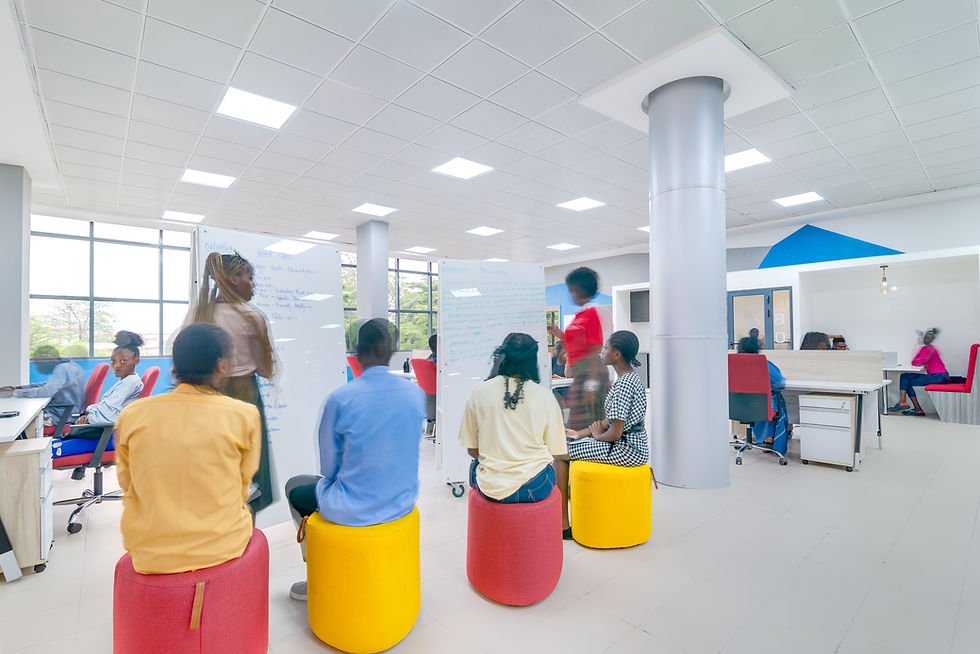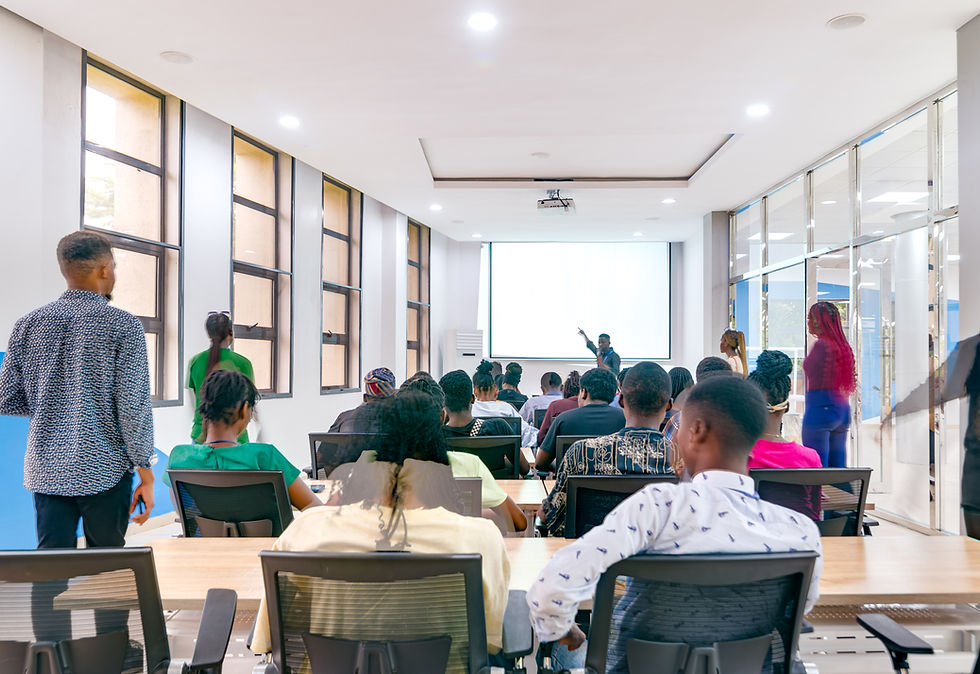From Aid to Alignment: How Public-Private Partnerships Are Redefining Learning Spaces
- Chisom Oguama
- Aug 8
- 4 min read
Updated: Aug 21
Education is both a social concern and an economic and strategic imperative. Governments are under pressure to prepare a rapidly growing youth population for future employment, yet the scale of infrastructure required far exceeds what public funding alone can sustain.
This challenge is giving rise to a new model of collaboration where Corporate Social Responsibility (CSR) and Public-Private Partnerships (PPP) in education intersect not in theory, but in concrete investments that reshape how and where learning happens. In this model, private sector engagement is not a charitable act. It is a long-term investment in national ecosystems and business sustainability.
Talent development, particularly in education, is increasingly recognized by private organizations not as a CSR initiative but as a strategic growth lever. The ability to attract, train, and retain skilled talent has direct implications for competitiveness, innovation, and market expansion. And for governments, these partnerships offer a scalable pathway to achieving national development goals, particularly Sustainable Development Goal 4 (Quality Education).

Why Public-Private Partnerships in Education Must Begin with Space
When we talk about improving education, we often focus on curriculum, technology, or training, rarely on the space where learning happens. Yet how a space is structured, how it flows, and how it feels has a profound effect on how people learn, collaborate, and create.
Design is not cosmetic; it is cognitive. It shapes behaviour, supports pedagogy, and sends signals about what is possible. A well-designed innovation hub houses technology and encourages problem-solving. A flexible classroom saves space and nurtures agility of thought.
In the context of PPPs, this becomes critical. When both public and private actors are invested in long-term impact, the learning environment must reflect the future students are being prepared for. That means designing spaces that echo the real world which features start-ups, labs and creative studios rather than traditional rows of desks. These spaces should enable the development of skills that matter: collaboration, critical thinking, and digital fluency.

When Public Intent Meets Private Insight
At Lagos State University, a new kind of learning space has emerged through collaborative investment. The LASU Innovation Hub is a technology-forward environment designed to encourage entrepreneurship, digital literacy, and creative problem-solving.
Equipped with maker labs, collaboration lounges, and smart classrooms, the hub invites students to engage in hands-on innovation. It serves both academic needs and wider community access, blurring the lines between university and industry.

Similarly, in Kwara State, a public-private initiative led between Kwara State Government and IHS Towers to the create an innovation hub aimed at boosting workforce readiness and digital inclusion.
The space was designed for functionality and adaptability capable of hosting coding bootcamps, youth development programs, and emerging tech events. Beyond infrastructure, it represents a mindset shift that learning environments can and should be designed to serve as platforms for economic mobility and regional competitiveness.
Both hubs underscore a growing understanding that investment in education must extend beyond curriculum and into the spatial systems that support it. These are not donations; they are infrastructure with a long tail of value creation for students, for governments, and for businesses alike.
Shared Infrastructure, Shared Outcomes

The private sector can no longer afford to view CSR as separate from its growth strategy. Investing in education through PPPs is socially responsible and economically sound. It builds stronger talent pipelines, opens up new markets, and helps future-proof operations in a fast-changing world.
For the public sector, the case is equally clear. Purpose-built educational spaces strengthen national innovation ecosystems, create local jobs, and accelerate progress toward development goals. According to UNESCO, low- and lower-middle-income countries face an estimated annual education financing gap of over $97 billion to meet SDG 4 targets by 2030, an impossible target without private sector alignment.
What Government and Business Leaders Must Do Next
If we are serious about talent development, we must rethink the infrastructure that supports it.
Public-private partnerships are a future-forward strategy for national competitiveness. Governments that invest in educational spaces through collaboration expand access and create ecosystems that attract private capital, build innovation pipelines, and accelerate development outcomes. It’s time to view investments in learning environments as critical components of a country’s economic infrastructure.
The future of your company depends on the skills, creativity, and resilience of the next generation. By partnering with public institutions to build spaces that reflect real-world innovation, you’re investing in long-term growth, talent, and market relevance. The companies that will lead tomorrow are the ones building talent ecosystems today.



Bravo
Brilliant write-up.